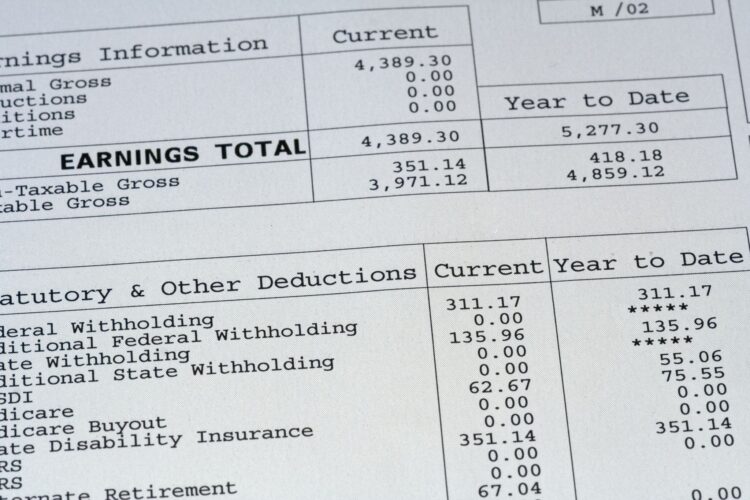Money Matters: Pay stub items you can’t afford to overlook

shutterstock
What was the net income total on your last pay stub? How about a 401(k) deduction? These days, with direct deposit and e-banking, the question should be, “When was the last time you actually saw the pay stub?”
Amid these uncertain economic times, understanding the activity recorded on your paycheck is more important than ever.
“Your pay stub is the key to understanding your gross and net pay, and to checking the math on your wages and deductions,” says Gayle Sato at experian.com. “Additionally, your pay stub may come in handy as proof of income when you’re applying for credit, a loan or an apartment.”
By correctly identifying and tracking earnings, taxes and other fees and deductions, you can be sure you receive what your employer owes you.
Let’s talk about the three primary sources of information provided on your pay stub: earnings, tax withholdings and deductions.
Earnings: Gross income vs. total net income
The pay rate section of your pay stub shows more than just your earnings: It shows the source of those wages. This section should show hourly wage and how many hours you worked during this pay period. If you used personal time off (PTO) hours, check to be sure your net income total reflects that.
If you qualify for holiday pay or supplemental income (SI) during this pay period, it will show those wages. Or If you worked overtime and were paid at a higher rate for those overtime hours, this section should show that activity. But the primary purpose of this section is to show your gross income for this pay period and YTD.
Gross income
This is where your earning journey begins. It’s the total earnings before taxes and deductions. Despite visions of “making it rain” on payday, most new hires are shocked to discover the take-home (net income) pay is much less than the offered amount or gross income. Although it won’t remove the sting of sticker shock, studying your pay stub can solve the mystery of where the earnings from all of your hard work went.
Total net income
This is the amount deposited in your account. Your pay stub illustrates the pathway from the gross income amount to the final net income total. But to get to that total, your earnings pass through a series of taxes, deductions and fees.
Taxes
Let’s talk about taxes. A hefty portion of our paycheck goes toward state and federal taxes. While state income tax rates vary, employers in every state collect federal income taxes. You can track them on your pay stub as FICA (Federal Insurance Contributions Act), Social Security (SS or SOCSEC) and Medicare (MED) taxes. Since employers and employees split the 12.4% Social Security tax and 2.9% Medicare tax equally, pay stubs will break down those withholdings.
Social Security taxes are used to provide benefits for people with disabilities, retired employees and survivors benefits for dependents. So, essentially, you are helping support people who are no longer part of the workforce.
“Medicare taxes, unlike Social Security tax, go to pay for expenditures for current Medicare beneficiaries,” explain experts at H&R Block. “If you earn at least a specified amount for at least 40 quarters, you can get Social Security benefits when you retire.”
Employers are responsible solely for the federal unemployment tax, but they also deduct state tax withholdings from their employees at every pay period.
The YTD (year-to-date) totals of your wages and federal income tax withholdings should match those listed on your W-2 form.
Deductions and fees
With today’s hybrid or remote work environment, it’s common for finance teams to handle payrolls in different states or even countries. That is partly why tracking deductions and fees (along with state tax rates) listed on your pay stub is so important.
For instance, if you’ve opted to contribute a portion of your earned income to a 401(k) or an IRA retirement fund, your pay stub should reflect those contributions. The same rule applies to health insurance payments or flexible spending accounts (FSA) when offered. Employer retirement fund contributions are popular for attracting new talent. So check to be sure this happens each pay period and note how much they add to your funds.
But an additional reason to check your pay stub is fees. For instance, if your employer offers local gym memberships or public transportation passes and you’ve opted not to use them, make sure you are not paying for those fees.
Start the new year by checking your pay stub every pay period to ensure year-to-date totals include the correct wage and any applicable overtime, bonuses or expense reimbursements. Only then can you be sure the wages due match what you do.
J’Nel Wright is a project manager at Stage Marketing, a full-service content marketing agency based in Provo.



